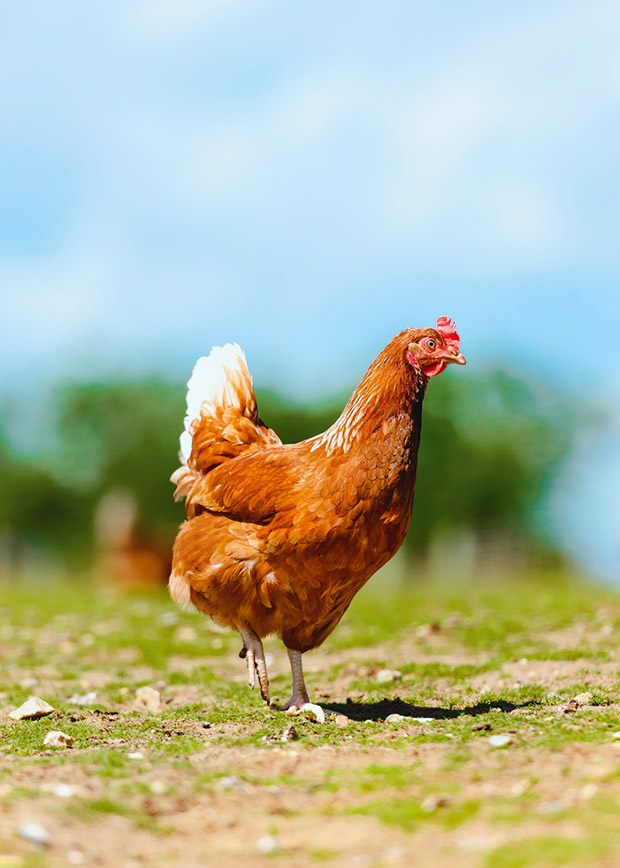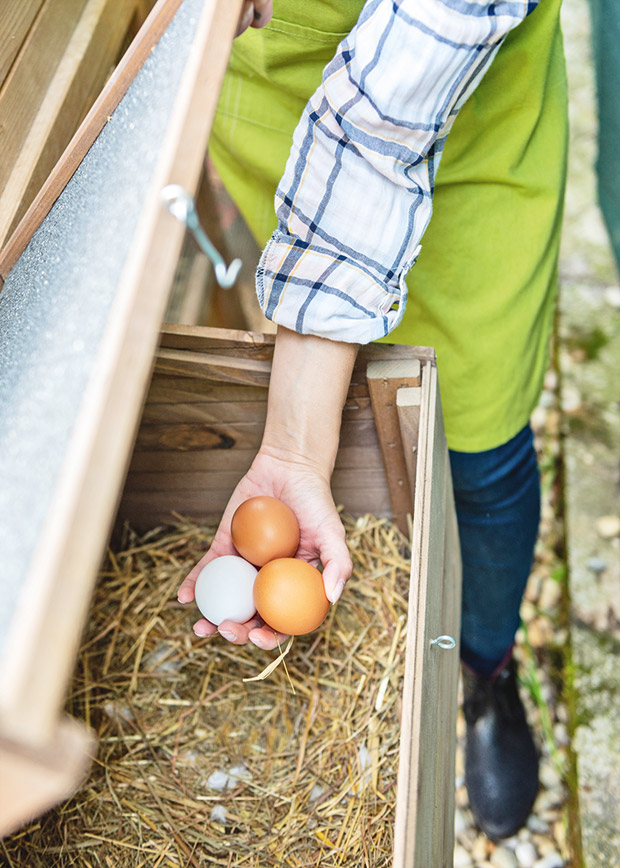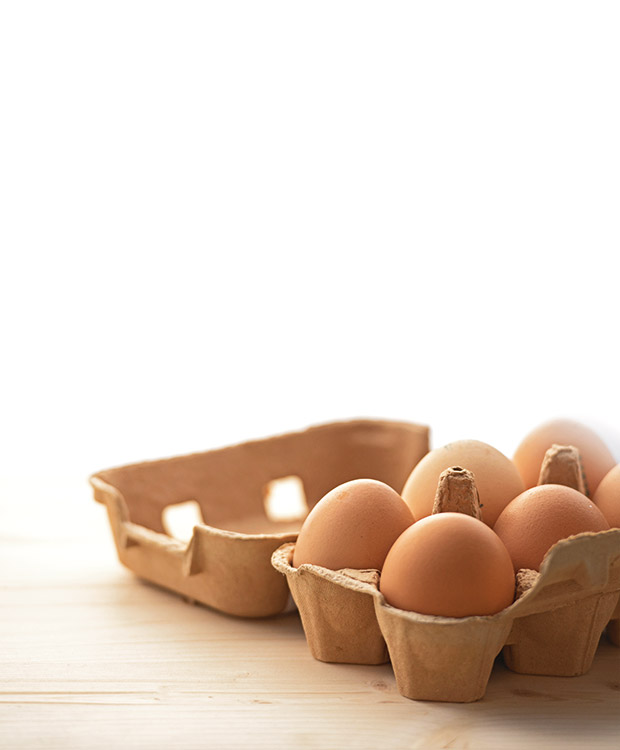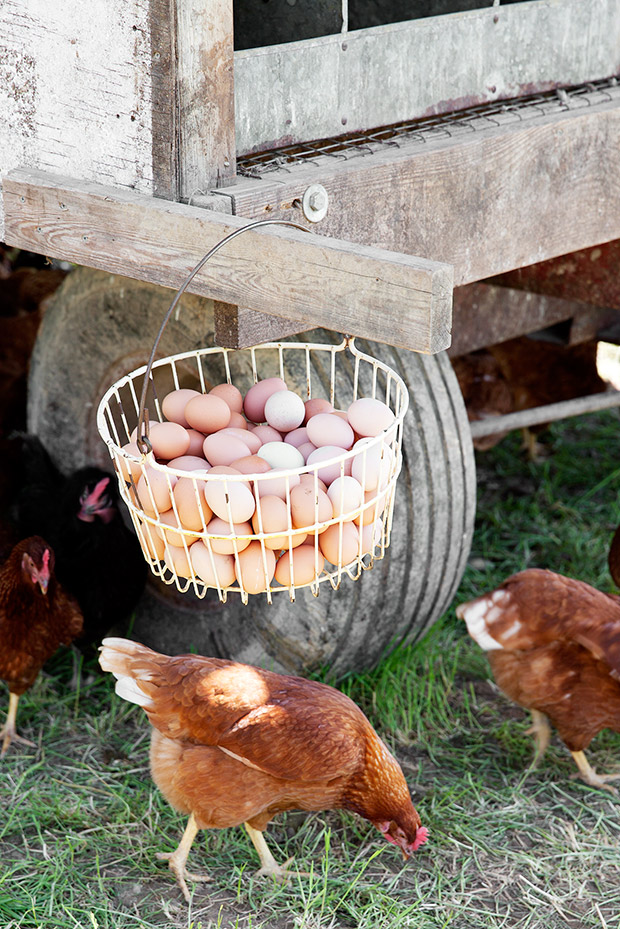4 things you need for a top-producing hen

There are four factors that must be in place if a hen is to live her best life.
Words: Sue Clarke & Nadene Hall
Some hens, such as commercial hybrids, are carefully bred to lay very high numbers of eggs. Most others are humble ‘barnyard specials’ with a jumble of genes. Every hen has a maximum egg production potential.
Whether she achieves it comes down to four factors: her genetics, the environment, how well she’s cared for, and her diet. Get one wrong, and you may not see any outward signs of a problem, but your hen won’t fulfil her potential as a layer.
1. The environment
The better the habitat, the better a hen will perform. Problems include:
■ temperatures too high or too low;
■ the wrong food, or not enough;
■ too much competition or bullying from flock mates;
■ a lack of space to feed;
■ a lack of clean water;
■ parasites (causing anaemia, ill-health);
■ rodents (spreading disease);
■ wild birds (spreading disease).
Hens living in a stressful environment may not settle, meaning they won’t eat enough for regular egg production, or produce many (or any) eggs.
2. Management
This is what you provide and do as the carer for your flock. Poultry need:
■ a comfortable area to live in and lay, with shelter from the elements;
■ sufficient and correct feed for their age;
■ their health needs attended to in a timely and proper manner;
■ actions taken to prevent disease;
■ the correct treatments and vet care if/when the need arises;
For example, hens that are uncomfortable due to a mite infestation in their coop tend to move around more at night, and may suffer anaemia due to blood loss. They sleep less, eat less, and lose weight/condition. They may lay less, or stop laying. A bad mite infestation can eventually kill a hen if it’s not treated.
3. Genetics
A hen’s genes are probably the most important factor in terms of egg numbers and egg quality. The characteristics a hen inherits from her parents include:
■ egg colour;
■ egg shape;
■ the robustness of the shell;
■ the quality of the contents, eg albumen consistency;
■ the absence or presence of meat spots or blood;
■ clutch size, ie the numbers of days a hen lays consecutive eggs without a break;
■ the age she lays her first egg.
The fertility of a hen or rooster can also be breed dependant. The fertility of some breeds is traditionally quite low. Others have chicks that may be less robust at hatching. Crested breeds such as Silkies and Polish can have brain problems due to their vaulted skulls.

This type of predisposition can be magnified if there are other negative factors (eg, lack of food), or improved if all the other conditions are perfect. A hen can never achieve her full egg production potential if she doesn’t have the right environment, nutrition, and management.
4. Nutrition
Even the best genetics can be stuffed up by faulty nutrition. Poultry need to eat 30-40 different nutrients every day. A shortage in the required energy, protein, salt, or calcium will affect a bird’s health within days. A lack of others, such as trace minerals and vitamins, may take several weeks to have an effect.
A nutritional deficiency will affect a hen’s ability to:
■ ovulate;
■ form a well-shaped egg;
■ combat pathogens or parasites in her environment.
WHY HEAVY BREEDS HAVE SOME LEEWAY IN THEIR DIET
Some of the heavier crossbreed hens or heavy (large size and weight) heritage breeds such as Orpingtons, Rhode Island Reds, and Plymouth Rocks, are more likely to cope with a diet that isn’t quite perfect. That’s mostly because they can eat a lot more compared to smaller breeds, which compensates for some minor shortfalls. They also tend to produce fewer eggs.
AND WHY HIGH EGG-LAYING LIGHT BREEDS DON’T
Light breeds (small size and weight) such as Leghorns, Silkies, and bantams, have smaller appetites, lower body weight, and lay a lot more eggs in a season. Commercial hybrid hens – also a light breed – are the most finely tuned, with a high feed efficiency-to-egg ratio.
The proportion of protein, fats, and carbohydrates in what they eat must be enough to maintain their bodyweight, health, and egg production. If it falls short, egg production and the quality of the eggs will quickly fall, even if they have the perfect environment, management, and genetics.
GOOD (& BAD) NUTRITION
The nutritional requirements of poultry are one of the most well studied of all livestock. Birds receiving a nutritionally balanced, quality feed, and clean, fresh water are going to be healthier and more productive than birds that don’t.
The best thing to do is offer a balanced feed first thing in the morning. Birds can then choose to eat more once out in their environment, but you’ll have ensured they have the crucial nutrients they need for good health. If you want to offer scraps or a scattering of whole grains, make it a small amount (around 10g per bird) in the late afternoon, just before they roost for the night. Digesting food overnight helps birds to keep warm.
It can be hard to believe that boring, dry pellets or mash are the best feed when your birds rush forward and eagerly gobble up scraps and grains. But this competitive, enthusiastic behaviour is genetically programmed into them, and it’s the way they would behave no matter what you were feeding.

For example, light breeds have a higher demand for energy and protein than heavy breeds. If you feed high carbohydrate foods such as bread, rice, and pasta scraps, they quickly fill their crop and digestive tract. Even if they later get access to a balanced feed (eg, commercially made mash or pellets), they physically won’t have room in their crop to hold it.
Scraps and whole grains don’t contain the nutrients poultry need to maintain good health. The first thing to shut down if a hen is malnourished is egg production (reproduction).
WHEN NUTRITION GOES WRONG
Too many carbs/high-fat scraps.
Scraps can create pads of fat in a hen’s abdomen which make it physically difficult or impossible for her to lay an egg. Fat pads may also cause egg peritonitis if the oviduct comes under pressure from fat build-up. Egg yolks are then squeezed out of the oviduct and into the body cavity, causing infection and death.
Too much fat also causes fatty liver haemorrhagic syndrome. If the liver becomes engorged with fats, it can burst open. This is fatal, usually instantly.
Too much protein
Sometimes, additional protein above the required daily intake of 16-17% crude protein in commercial feed is good for poultry, for example, when they’re:
■ young and still growing;
■ moulting and growing new feathers;
■ sick, with low appetite.
However, too much protein will result in bigger and bigger eggs, which can cause a prolapse of the oviduct, and is usually fatal. Commercial farmers often change the diet of hens at different points of their laying cycle. They gradually reduce protein levels as birds age (which is when eggs naturally get bigger). If they don’t, eggs may become too big for an older hen to lay, and also won’t fit inside standard egg cartons.

Poultry also need the correct type of protein containing specific amino acids. Two critical ones are methionine and lysine, only found naturally in animal protein, such as blood and bone meal added to commercial feed.
A vegetarian poultry feed uses plant proteins such as soy and legumes. It will be supplemented with synthetic methionine and lysine. If not, birds will suffer from:
■ flightiness;
■ feather pecking;
■ cannibalism;
Some organic feeds may not contain the correct amino acids – check the ingredients to see if they have (or haven’t) been added. It’s almost impossible for free range birds to find enough of the right protein in their environment to make up the shortfall.
Love this story? Subscribe now!
 This article first appeared in NZ Lifestyle Block Magazine.
This article first appeared in NZ Lifestyle Block Magazine.
